September Is the Best Month for Cooking—Here’s What to Make
Thomas Joseph encourages us to embrace the shoulder season between summer and fall. Here’s why he loves it and his favorite things to cook.
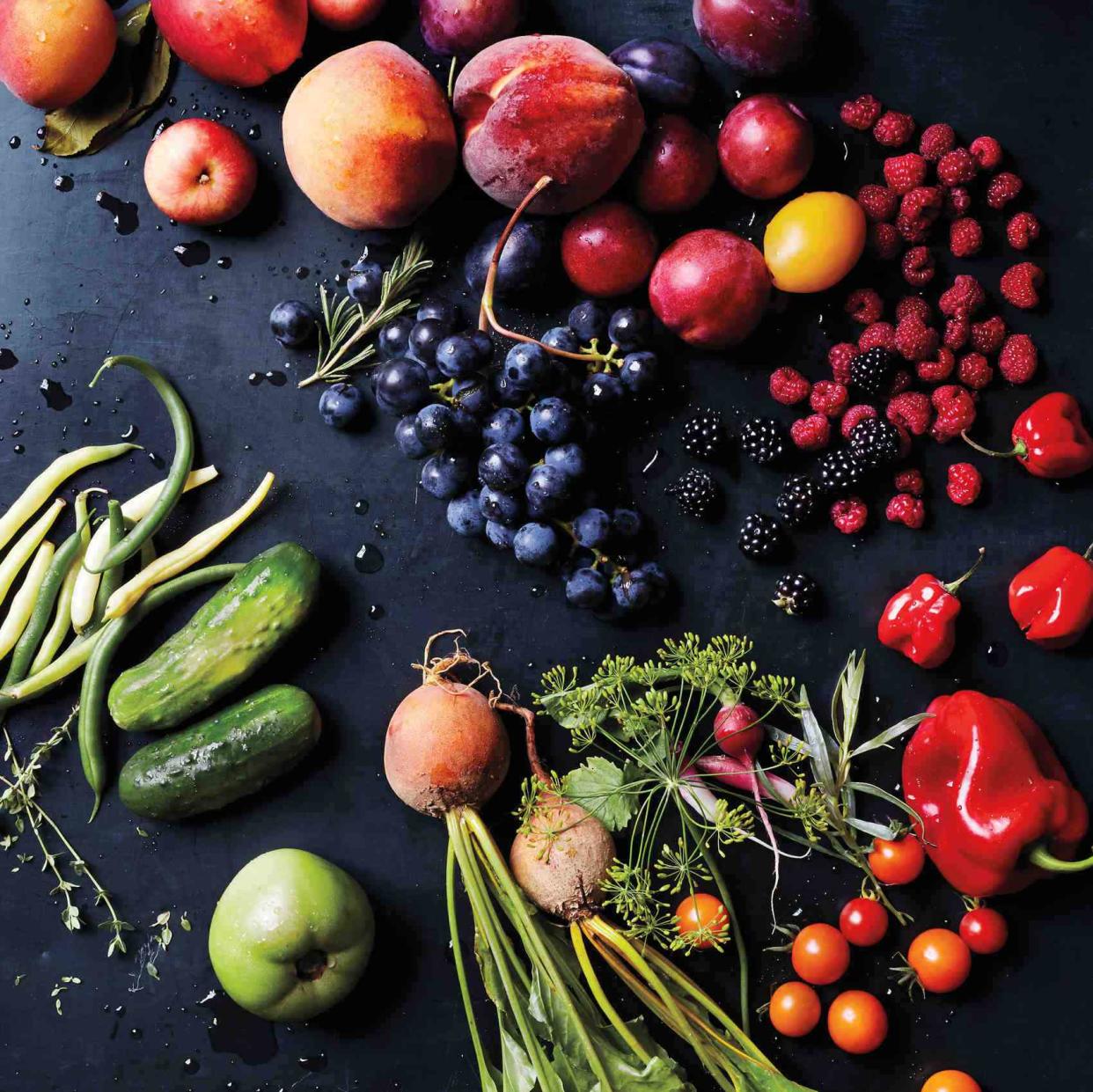
Christopher Testani
This is my favorite time of the year. You might expect me to love summer with all the tomatoes, corn, and zucchini—and I do. Or the holiday traditions of Thanksgiving—which I also love. But my absolute favorite time of the year is now, shoulder season. It offers the combination of late summer produce and early fall fruits and vegetables. The abundance of flavors, colors, and textures provides endless opportunities for tasty creations—and I cook more now than I do in peak summer.
Whether you hold onto summer and are in denial about fall or you have been dreaming of autumn and its coziness, you too should embrace shoulder season in your cooking. It’s the best of both worlds.
Related: 21 Fall Dinners to Make on Weeknights That Are Reliably Delicious
What to Shop for in Shoulder Season
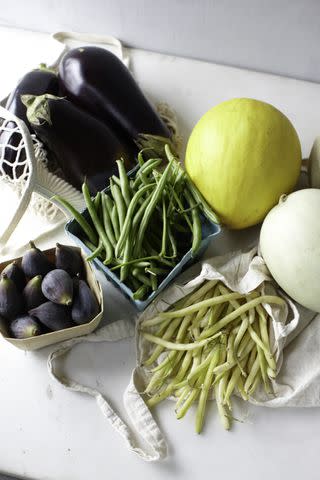
Vegetables
Eggplant
Zucchini and summer squash
Cucumbers
Corn
Tomatoes
Tomatillos
Sweet and spicy peppers
Okra
Pole and shelling beans
Garlic, shallots, and onion
Chard and other hearty leafy greens
Mature and flowering herbs
The first winter squash
Fruits
Grapes
Apples
Pears
Melons (they’re extra juicy and fragrant now)
Stone fruit (late-season peaches and plums)
The last of the berries
What to Cook
With so much delicious produce to enjoy, where should you start? Try my shoulder season go-tos, and then get inspired to try some new dishes.
Ratatouille and Beyond
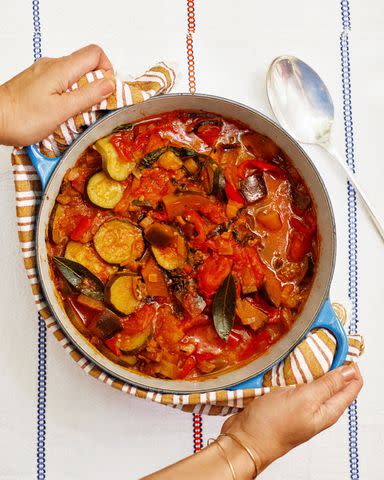
Ratatouille is a wonderful way to use the bounty of late summer/early fall produce. It’s an iconic Provençal dish, a vegetable stew made with eggplant, zucchini, tomatoes, peppers, and onion. And it’s surprisingly versatile; here are some of my favorite ways to use it.
As a side: Ratatouille is a perfect partner for grilled or sauteed fish or chicken for an easy meal.
Embellished: I like embellishing a basic ratatouille recipe with fresh herbs or briny ingredients like capers or olives. Sometimes, I add a fresh cheese such asburrata or ricotta or an aged feta.
As a component: I also like to take ratatouille to another level by using it as the filling for a savory tart or a rich vegetable pasta sauce.
For a cooking base: It’s also a flavorful cooking base for poaching fish or stewing chicken (I might add a little chicken or vegetable stock to prevent scorching). Once the fish or chicken is cooked, toss with pasta or serve over polenta for a complete, composed meal.
Eggplant Extravaganza
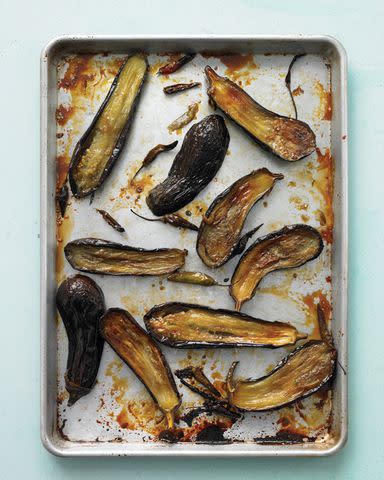
I grew up in a Lebanese-Italian household, and we used a lot of eggplant. It’s still one of my favorite vegetables. Though it’s a summer vegetable, I think eggplant comes into its own in the early fall because it takes so well to all kinds of cooking methods. Roasting or grilling both give eggplant a deep, rich, charred flavor. Frying, stewing, and braising are also fantastic techniques.
When it comes to flavor pairings, I always try to brighten things up. Fresh herbs are so abundant right now so I use them a lot with eggplant, ditto sweet yet acidic tomatoes—they pair nicely with the meatiness of cooked eggplant.
These are the two eggplant dishes I always come back to:
Caponata: This sweet and sour Sicilian eggplant dish is a favorite of mine. You can serve it as a starter with other dips, spreads, or cheeses, or it can be a lovely accompaniment to grilled poultry or fish.
My father’s pasta: A dish I grew up with is a version (more so a distant cousin) of Pasta alla Norma. My father learned this dish from a group of chefs who came to the U.S. from Parma. It uses a lot of peeled and finely diced eggplant with onion and garlic, sauteed gently in ample olive oil until it's meltingly tender. Pureed tomatoes and a splash of red wine are added with (my father’s Lebanese addition) cinnamon and a dash of allspice. Everything simmers together until the vegetables completely dissolve in the sauce. Butter, lots of parmesan cheese, and fresh basil are used to finish this interesting (and, for me, nostalgic) pasta sauce.
Pepper Salads
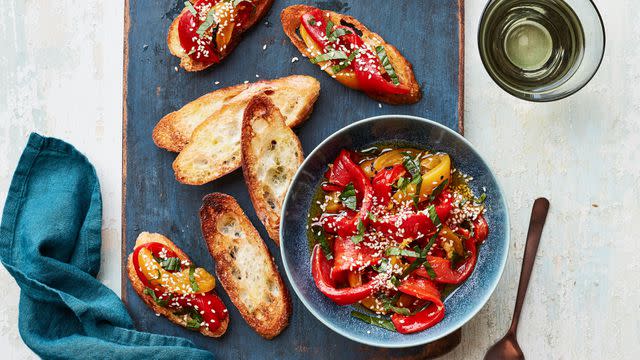
Sweet or spicy, I love peppers especially when they are in season (right now!) and are thin-skinned and full of flavor. I love to transform them into colorful, flavorful marinated salads. Grilled, roasted, or sautéed first, then layered with lots of olive oil and aromatics.
Basic pepper salad: My go-to combination includes olive oil, fresh thyme, one small clove of thinly sliced garlic, and salt and pepper.
Dressed up: The base “recipe” is great as is, but I also use it as a starting point, embellishing it with other ingredients. Add seasonal ingredients like fresh herbs, shallots, tomatoes, cucumbers, and blanched pole beans. You can take the peppers further by adding pantry ingredients like briny capers or olives, cannellini or garbanzo beans, aged cheeses like Parmesan, and even a splash of vinegar. These additions make pepper salad a more substantial dish for serving before dinner as an addition to a grazing board or simply on its own with crusty bread. It also makes a wonderful accompaniment for all kinds of protein.
Okra Every Way
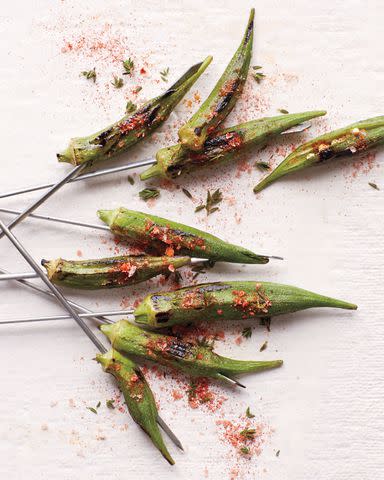
Don’t overlook okra; sometimes it gets a bad rap for being slimy, but that’s not the case. It all comes down to how you cook it to make the most of this lovely vegetable with endless possibilities. I typically use a dry method (think grilling, roasting, or broiling) to concentrate the flavor, add texture, and avoid the gooeyness most people detest.
Sometimes I just serve the okra simply after dry cooking, but I’ll also use this as a first step before stewing or braising (considered wet cooking techniques). It helps to maintain texture and also delivers on flavor.
Grilled: Grilled okra is wonderful and pairs nicely with bold flavors. Try seasoning (aggressively) with your favorite spices or spice blends. Splitting the okra lengthwise provides more surface area for flavor and char. Use grilling racks or skewers to avoid the dreaded fall-through. Serve with a cooling accompaniment (think yogurt, sour cream, etc.) flavored with fresh herbs and/or citrus.
Fried: Fried okra is similarly delicious. Smaller, thinner pieces better allow the vegetable to cook through without burning the batter or breading.
Other methods: Also try stewing, braising, or sautéing. After dry cooking, the addition of a flavorful cooking liquid or juicy, flavorful ingredients (onions, tomatoes, corn, etc.) will “rehydrate” the okra with moisture and infuse it with late summer flavor.
Chutneys and Pestos
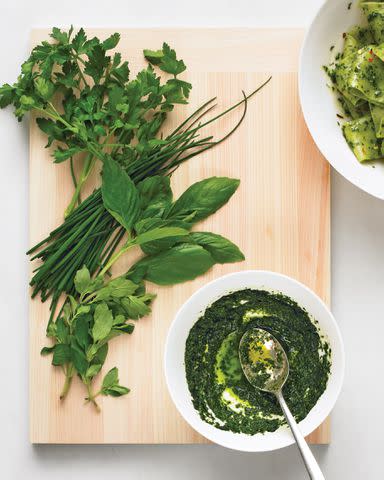
By now, you probably know that I love colorful, bright, and bold foods, and with the abundance of flavorful fruits, vegetables, and herbs, this is the best time to make the flavor bombs I’ll use all through the year. These secret weapons are chutneys and pestos, which are great ways to add flavor to weeknight meals. (They’re also perfect for entertaining and wowing a crowd with ease.) They bring a layer of spice and some savory autumnal feel to fresh produce.
Chutney: Chutneys are incredibly versatile. They can be made with a wide variety of ingredients, including apples, pears, stone fruit, tomatoes, vegetables, and herbs. Typically, there’s an addition of spice, vinegar, and/or sugar, which provides a unique range of flavors from sweet to savory and tangy to spicy.
Chutneys provide interest and complexity when included on a cheese board, or they can take a simply cooked piece of meat or fish to the next level. They are excellent on sandwiches (cold or hot sandwiches and burgers), as a glaze for meats, and filling for flaky pastry (both sweet and savory). They’re also a great way to use up fruit when you have too much; maybe all those really ripe late-season peaches?
Pesto: Pesto is another form of flavorful goodness and with the abundance of herbs that are going to seed, it’s a great time of year to harvest and “preserve” their deliciousness for later use. Traditional basil pesto is great, but remember that any tender herb can be transformed into a delicious and unique pesto. For example, cilantro with preserved lemon (or even lemon zest), chiles, almonds, and garlic can be a fantastic paste for soups, stews, rice, dips … even a marinade for chicken or fish. This same formula could be used with dill, parsley, chives, tarragon, chervil, or Thai basil. Change the aromatics and salty components based on your favorite flavor profiles.
Roasted Fruit
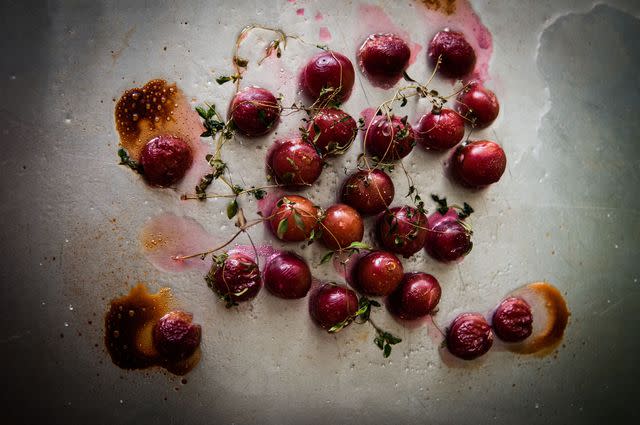
Using grapes, plums, figs, and apples as a savory condiment is something you need to try. If you haven’t already explored this way of using roasted fruits, you are definitely missing out. I say that as someone who isn’t a massive fan of roasted fruit. I’m more of a selective fan—and shoulder season is when my fandom is at its peak. These fruits are sweet and jammy; they work well when paired with other flavors and a touch of acidity to balance the sweetness.
Grapes, plums, and jammy figs: Roast them on high heat with one or two aromatics (think woody herbs like thyme or rosemaryand/or shallots, onions, or garlic). A little bit of spice and sourness can also be delicious—try adding a thinly sliced chile pepper before or after roasting, and a splash of aged vinegar for serving adds dimension and complexity. Try balsamic vinegar with figs, apple cider vinegar with apples, and red wine vinegar with grapes.
How to use roasted fruits: They are a wonderful accompaniment to proteins like chicken, pork, and lamb. They also are spectacular cooled and tossed in salads, with hearty grains, or go the sweet route and enjoy them over yogurt or ice cream. The possibilities are endless.
Read the original article on Martha Stewart.
